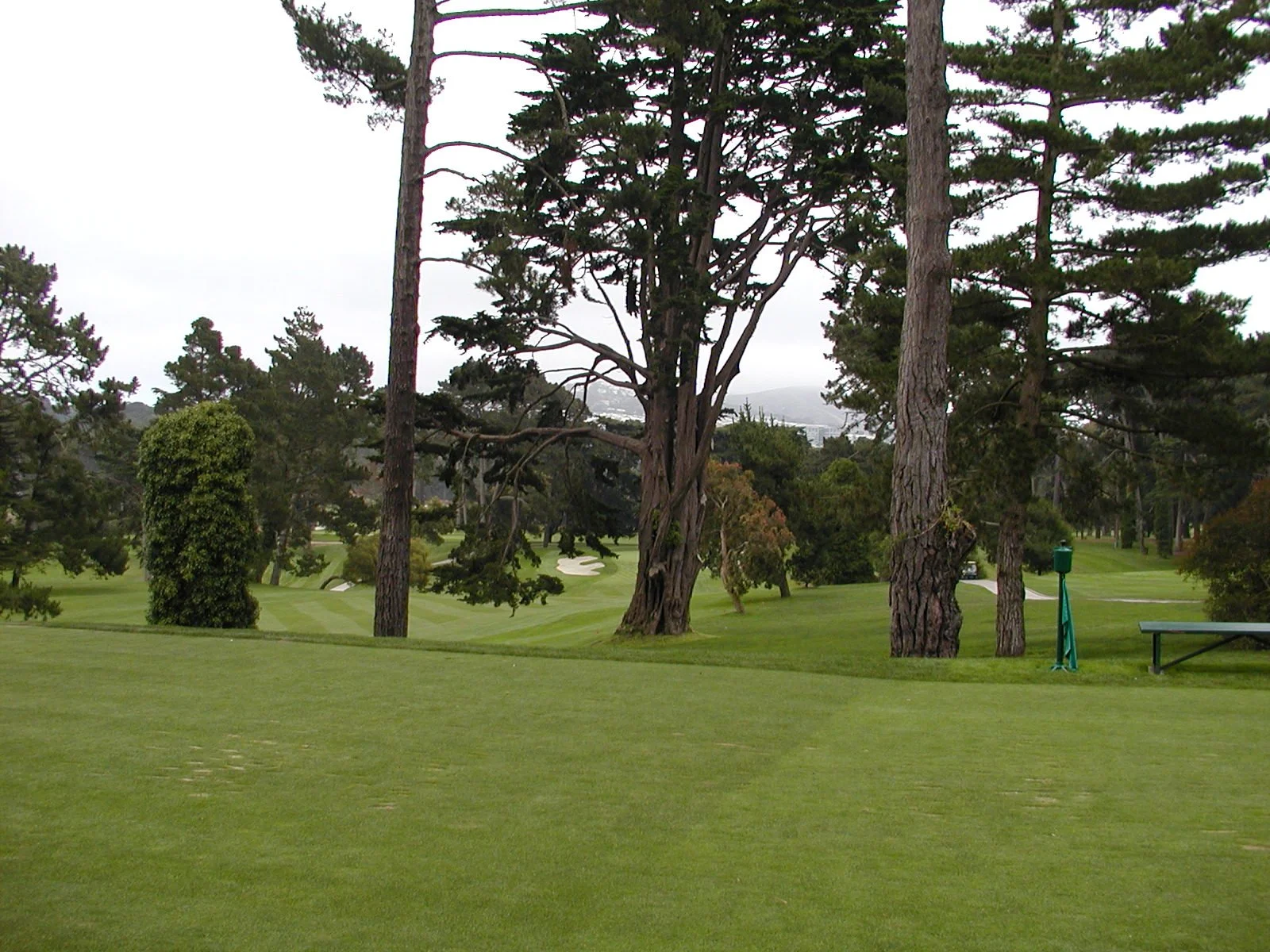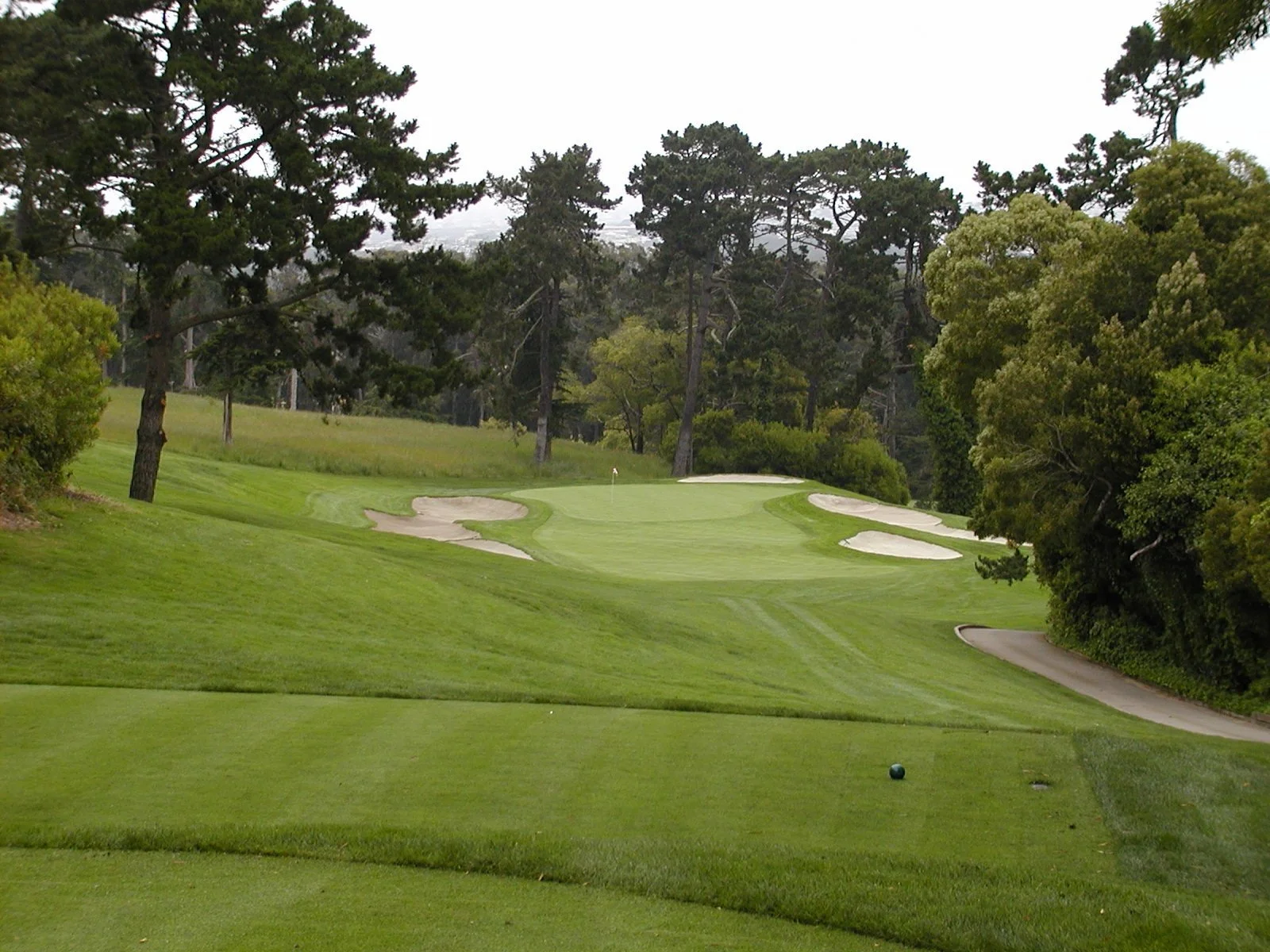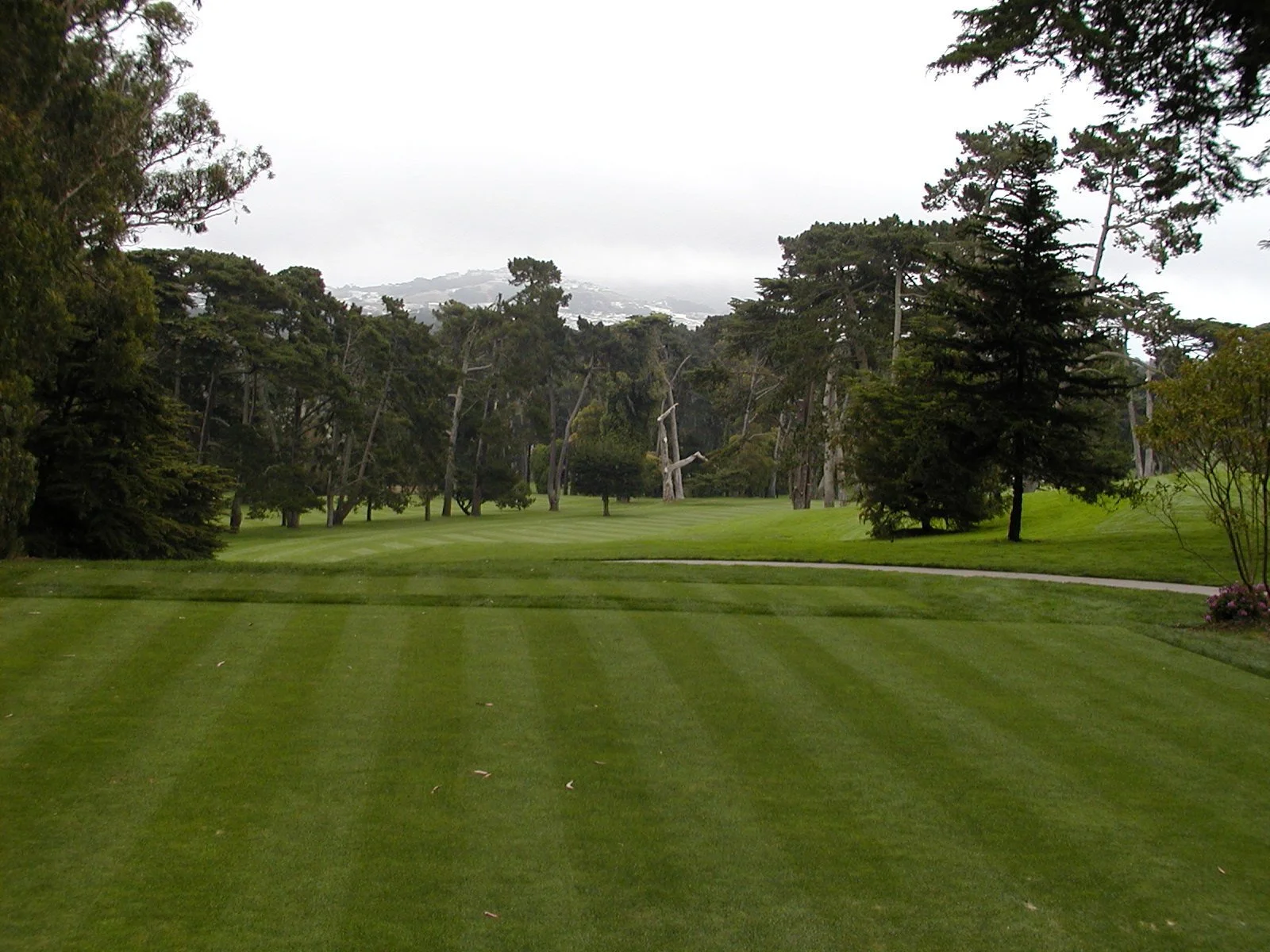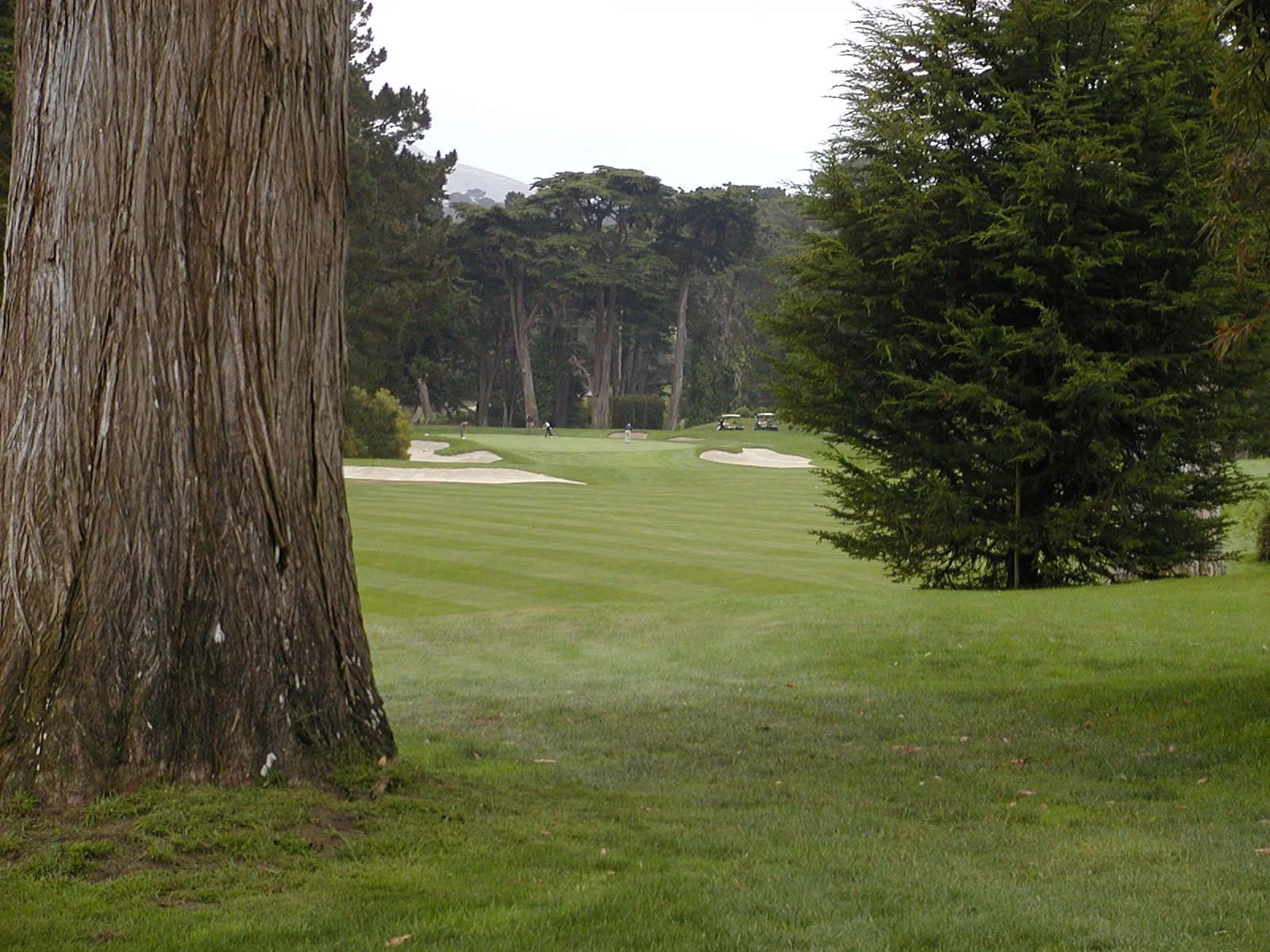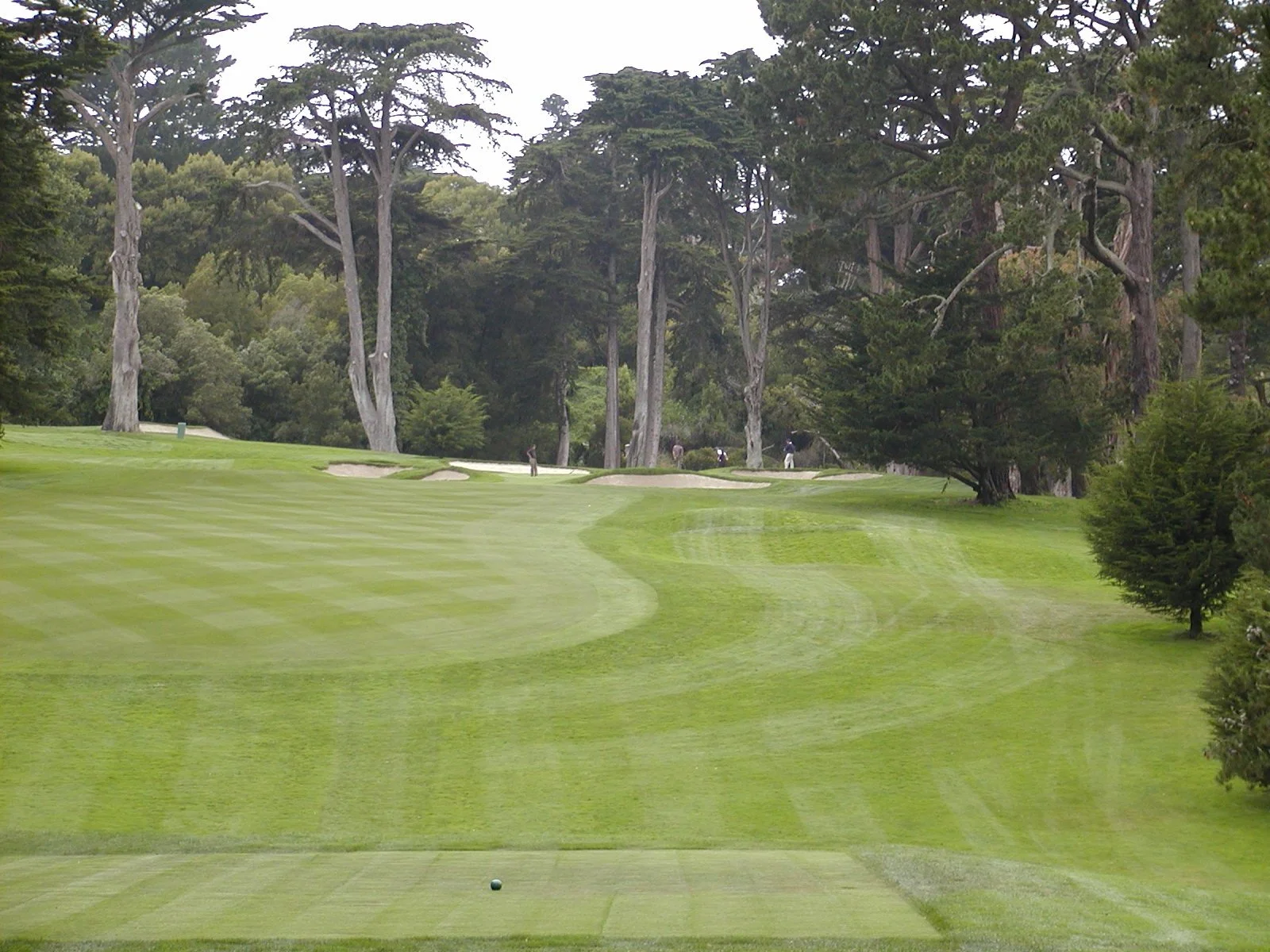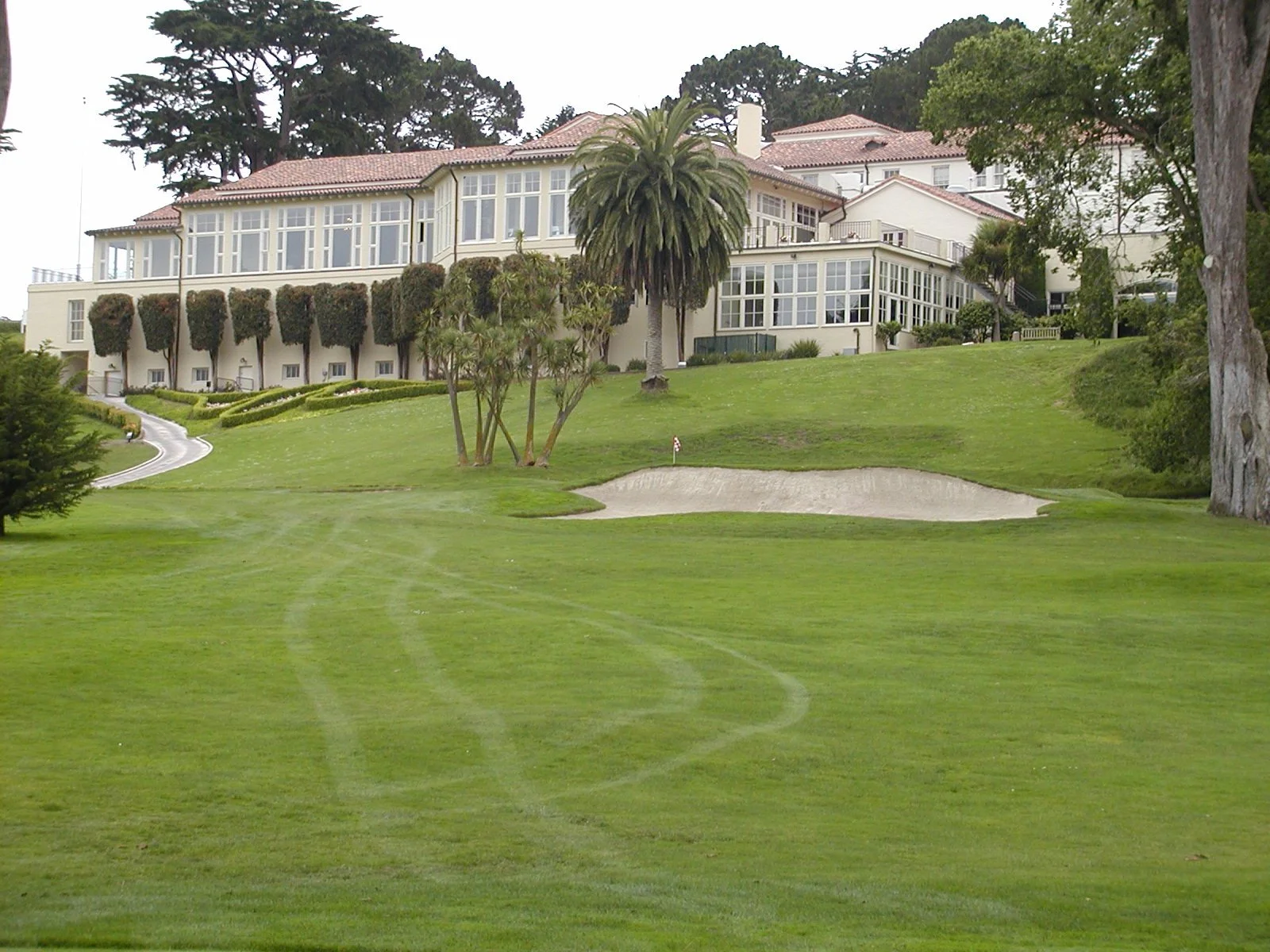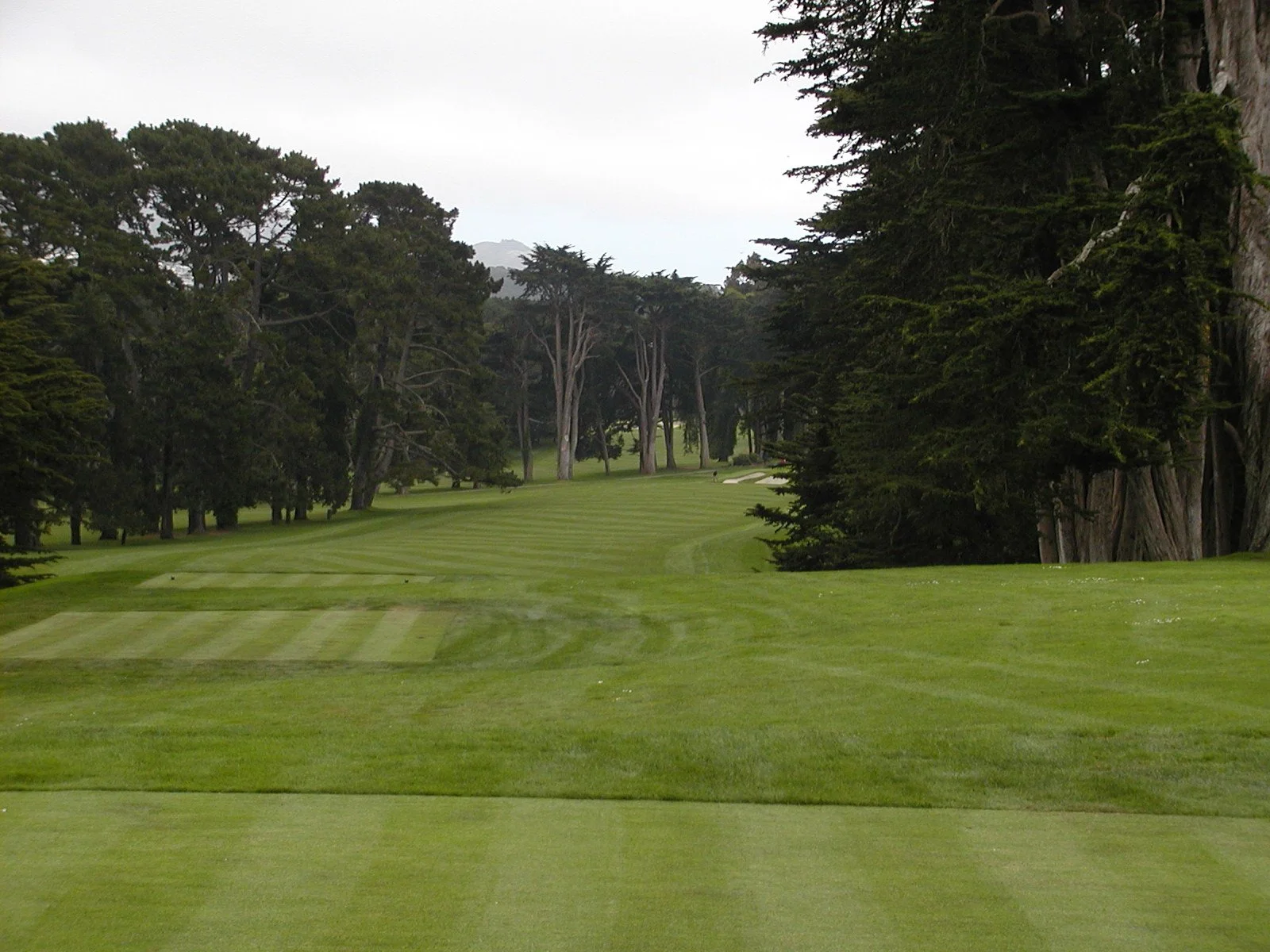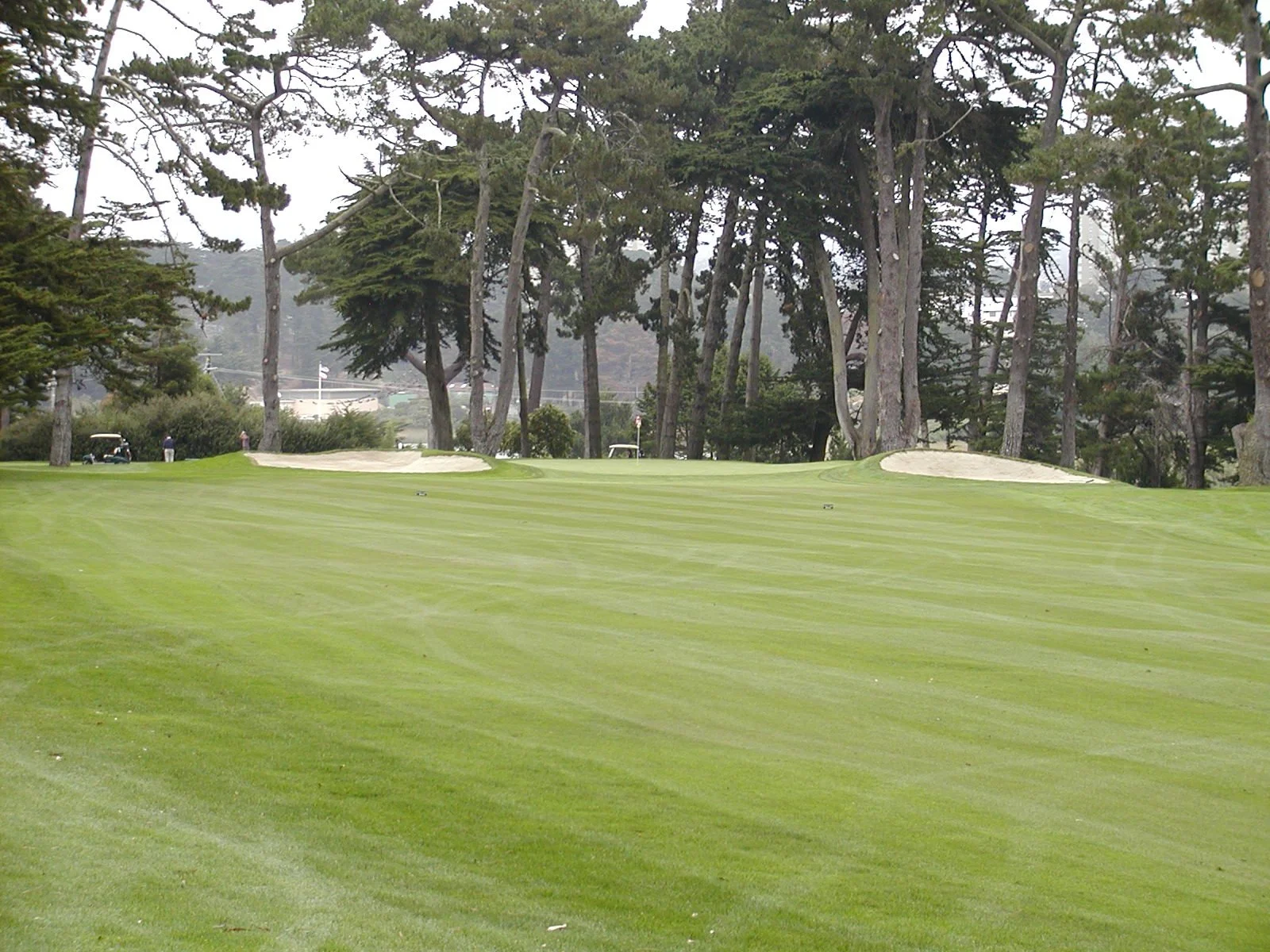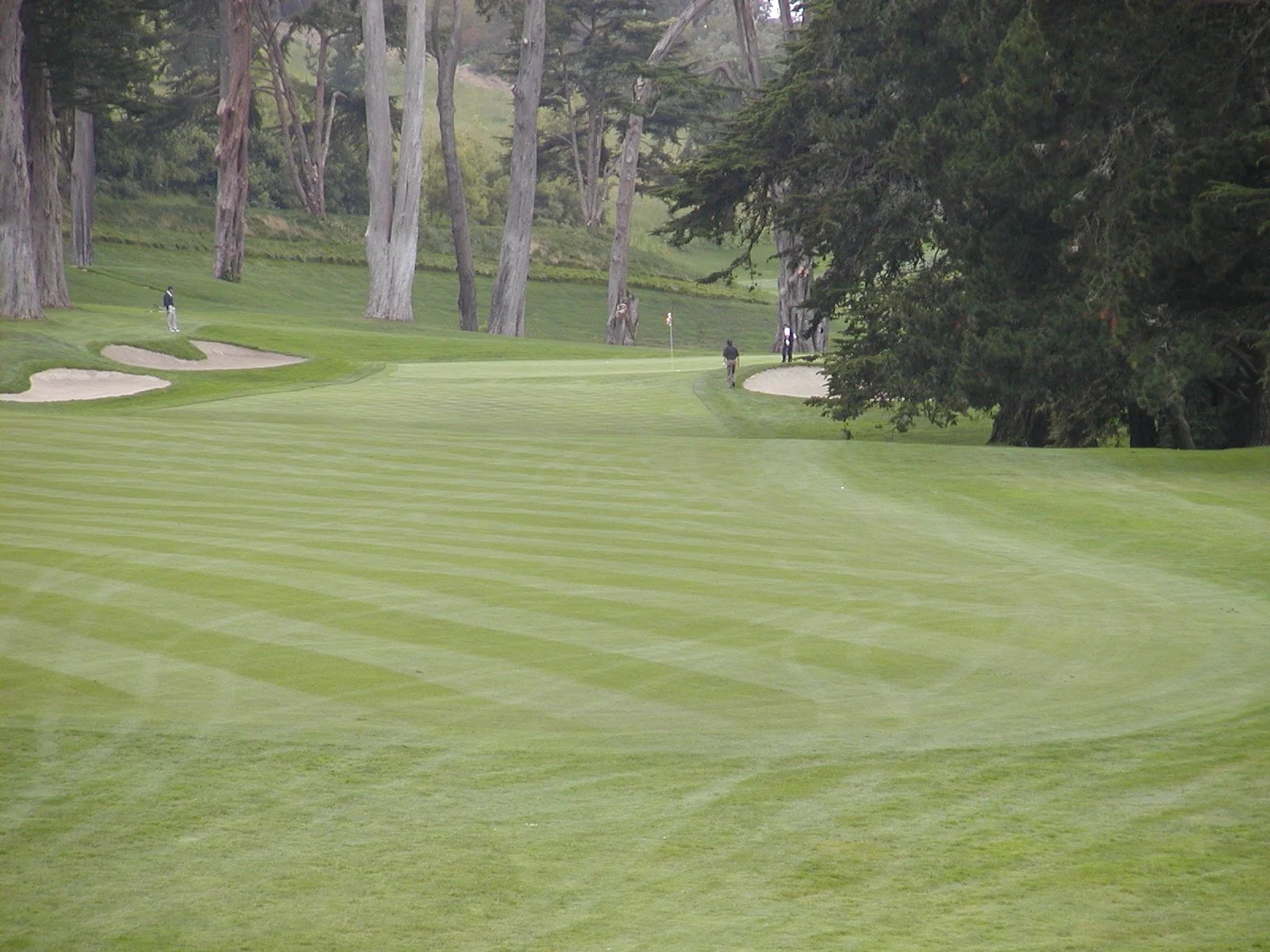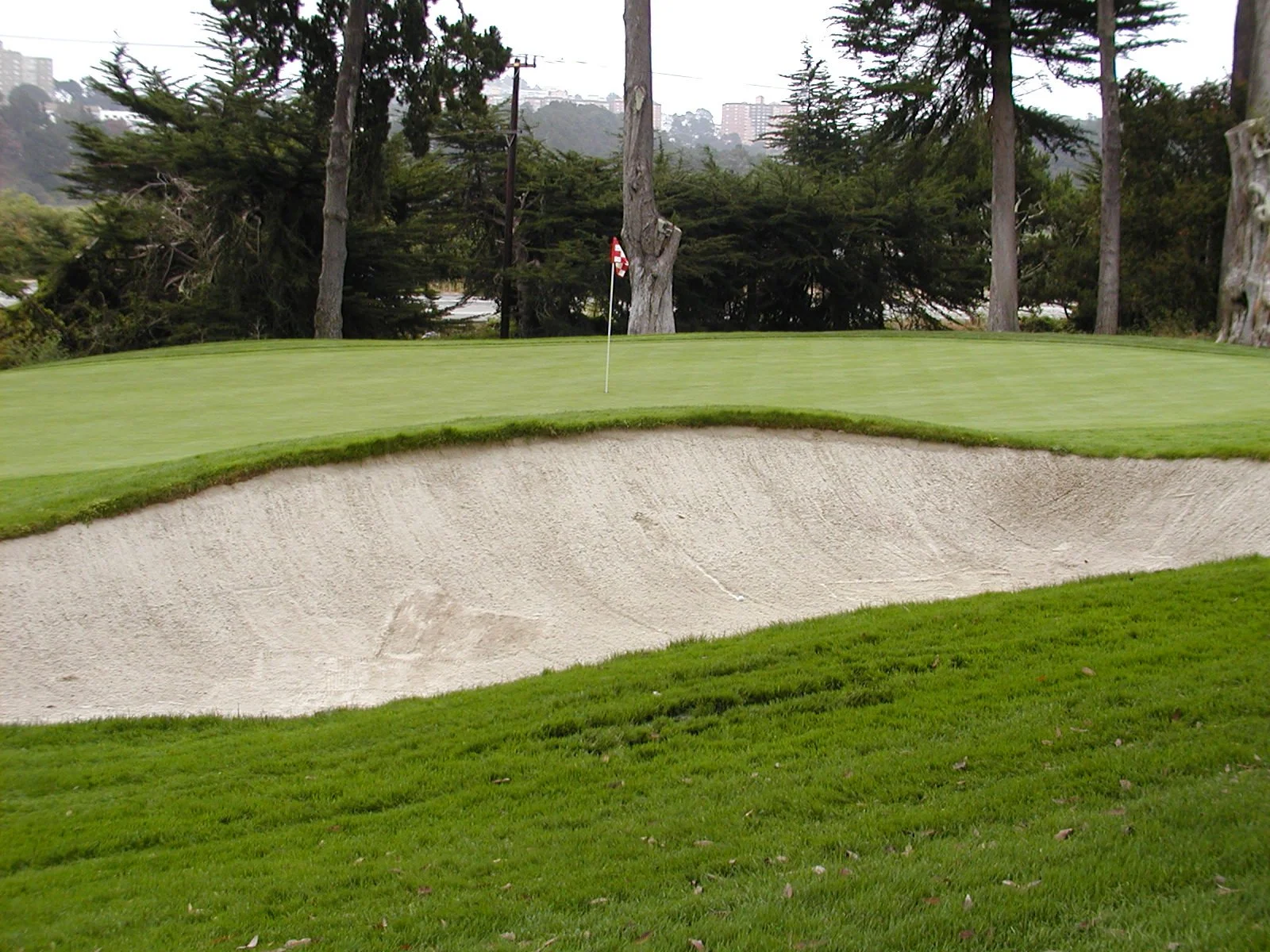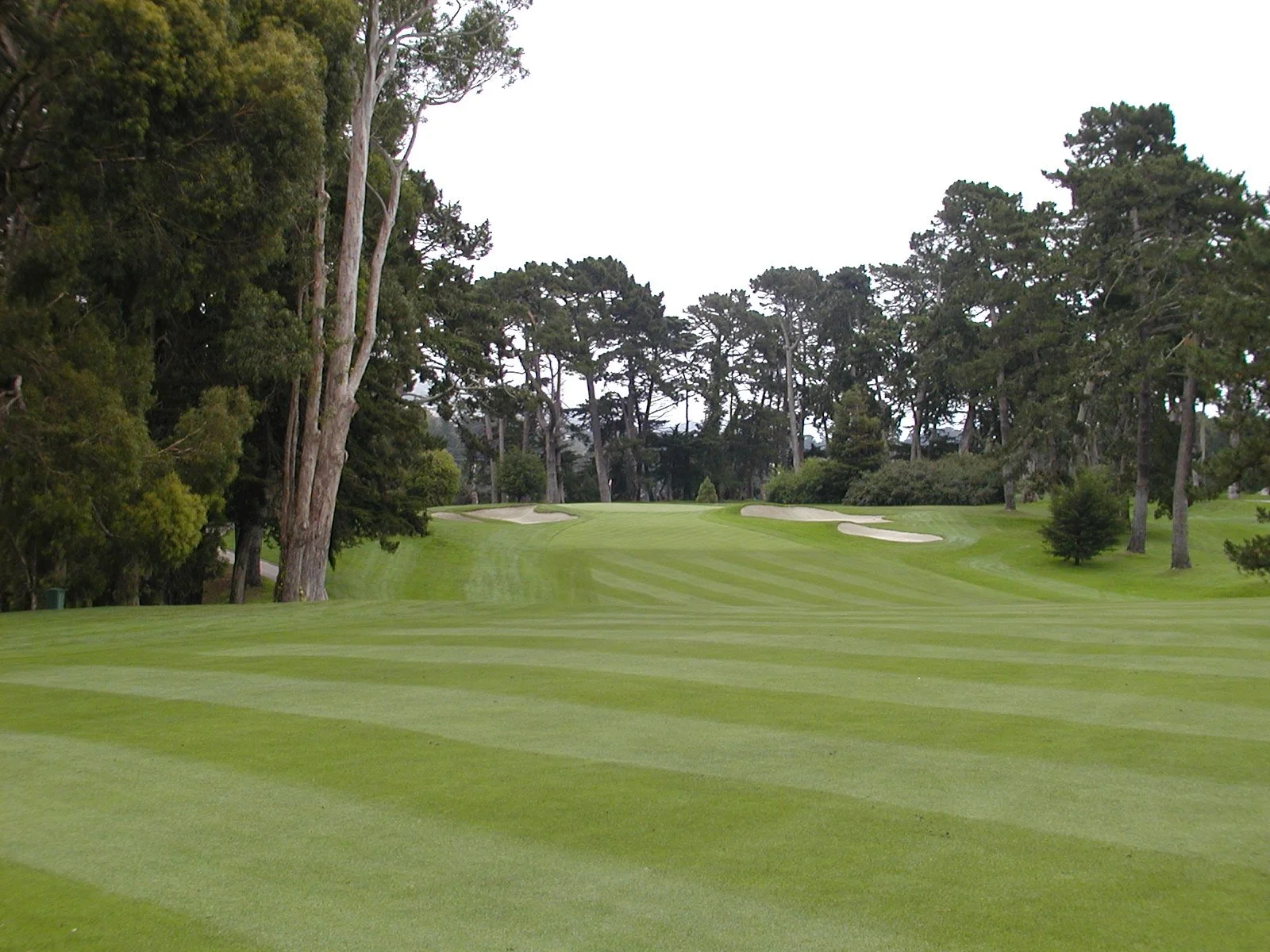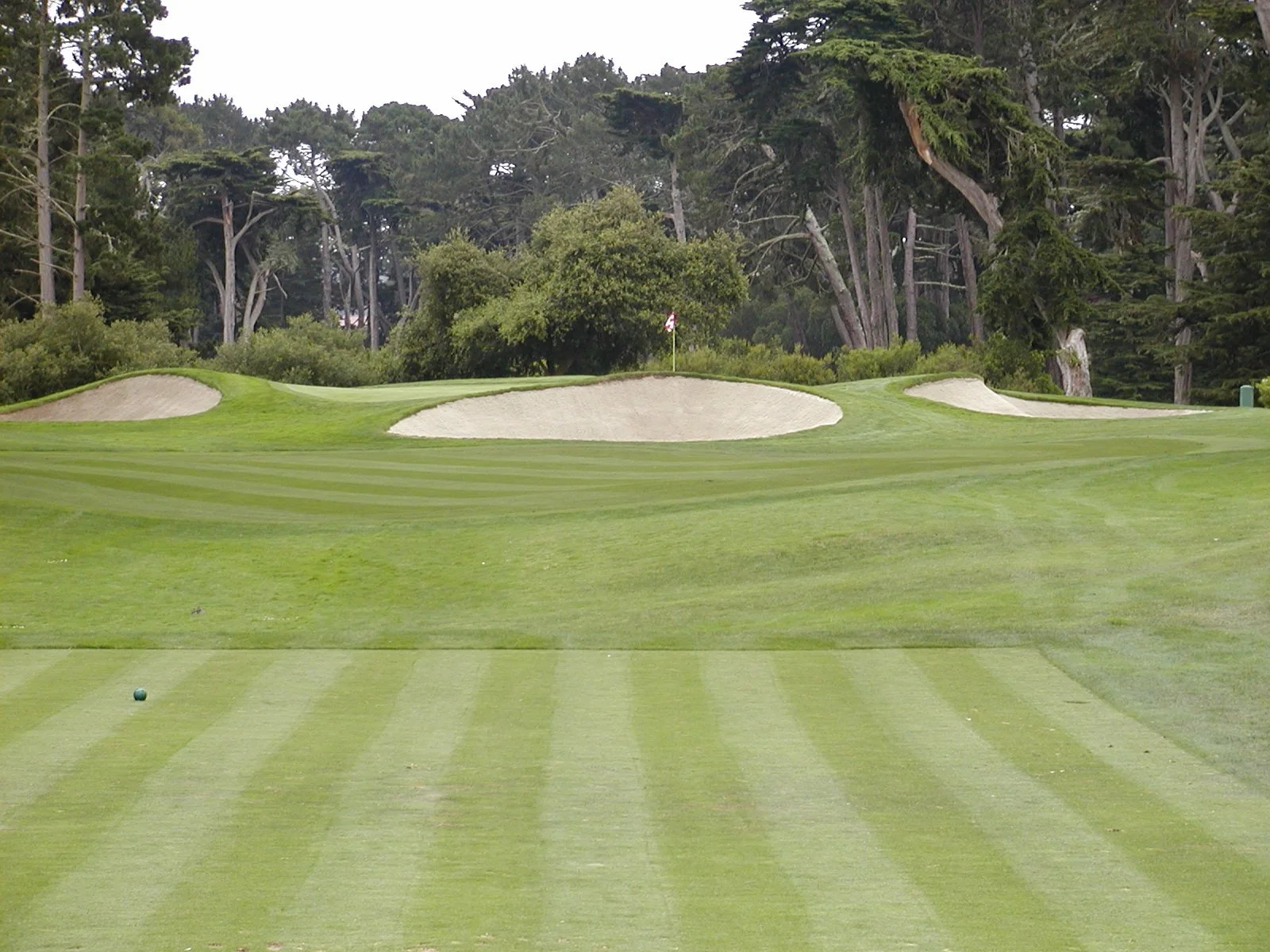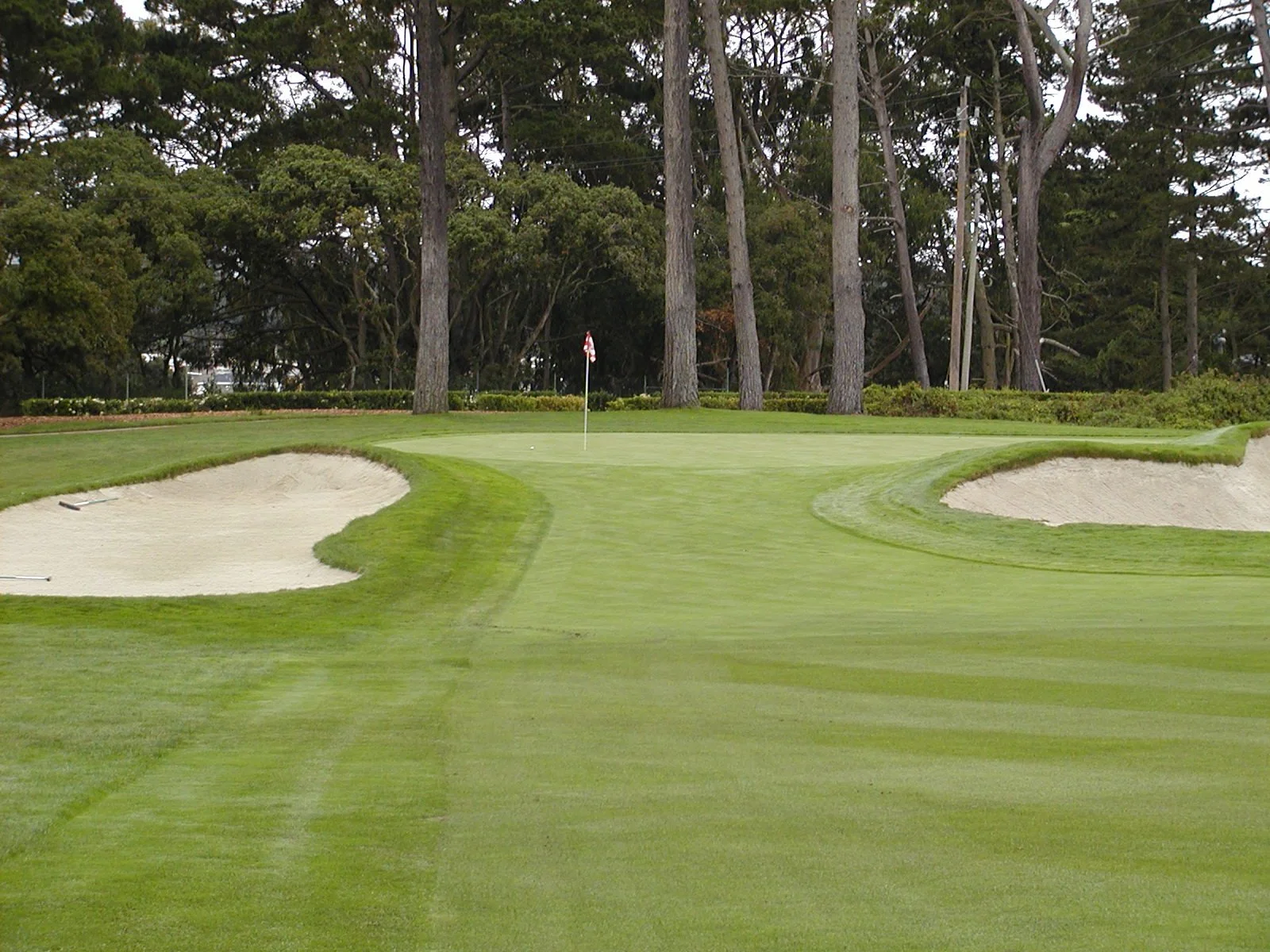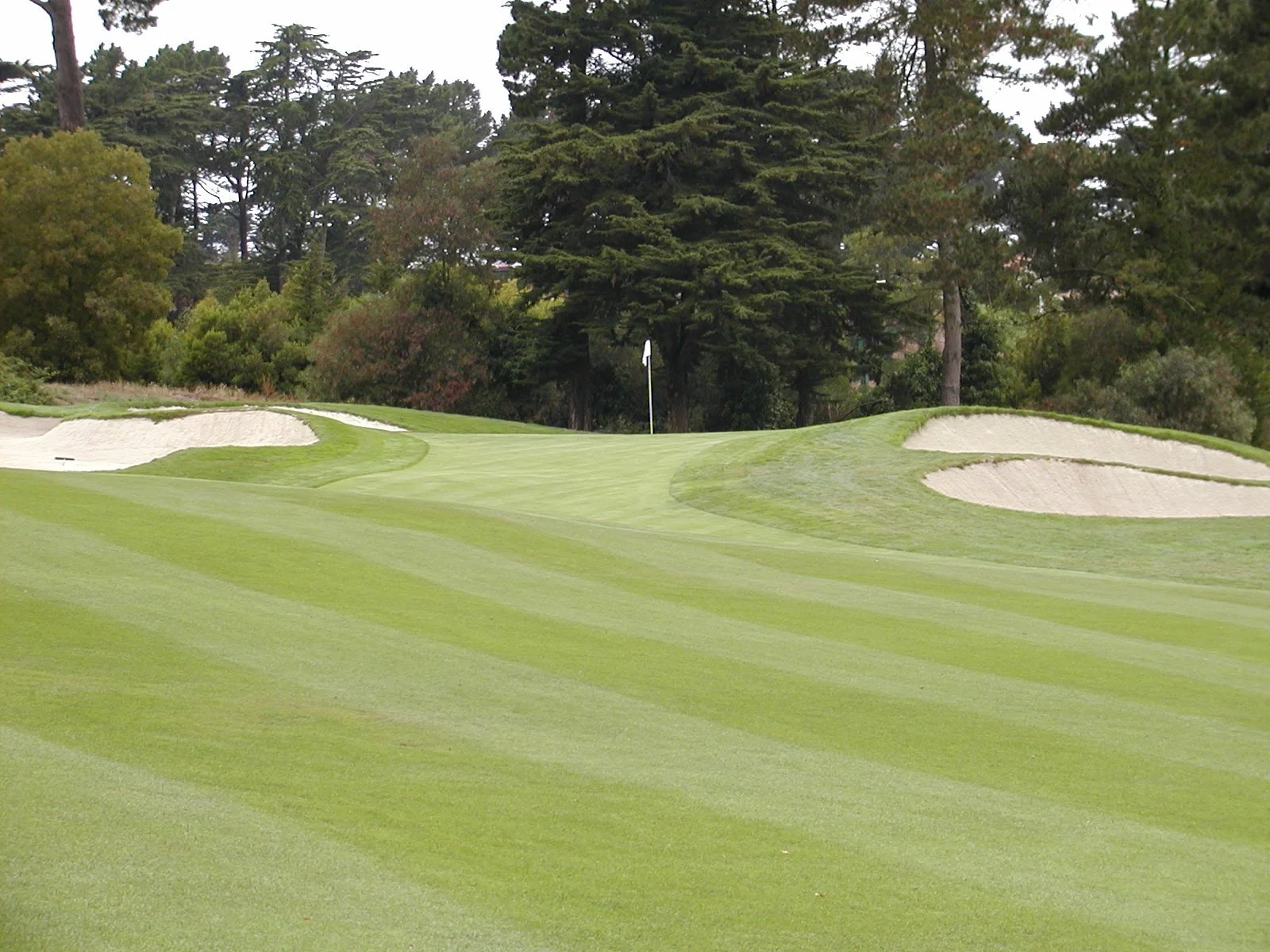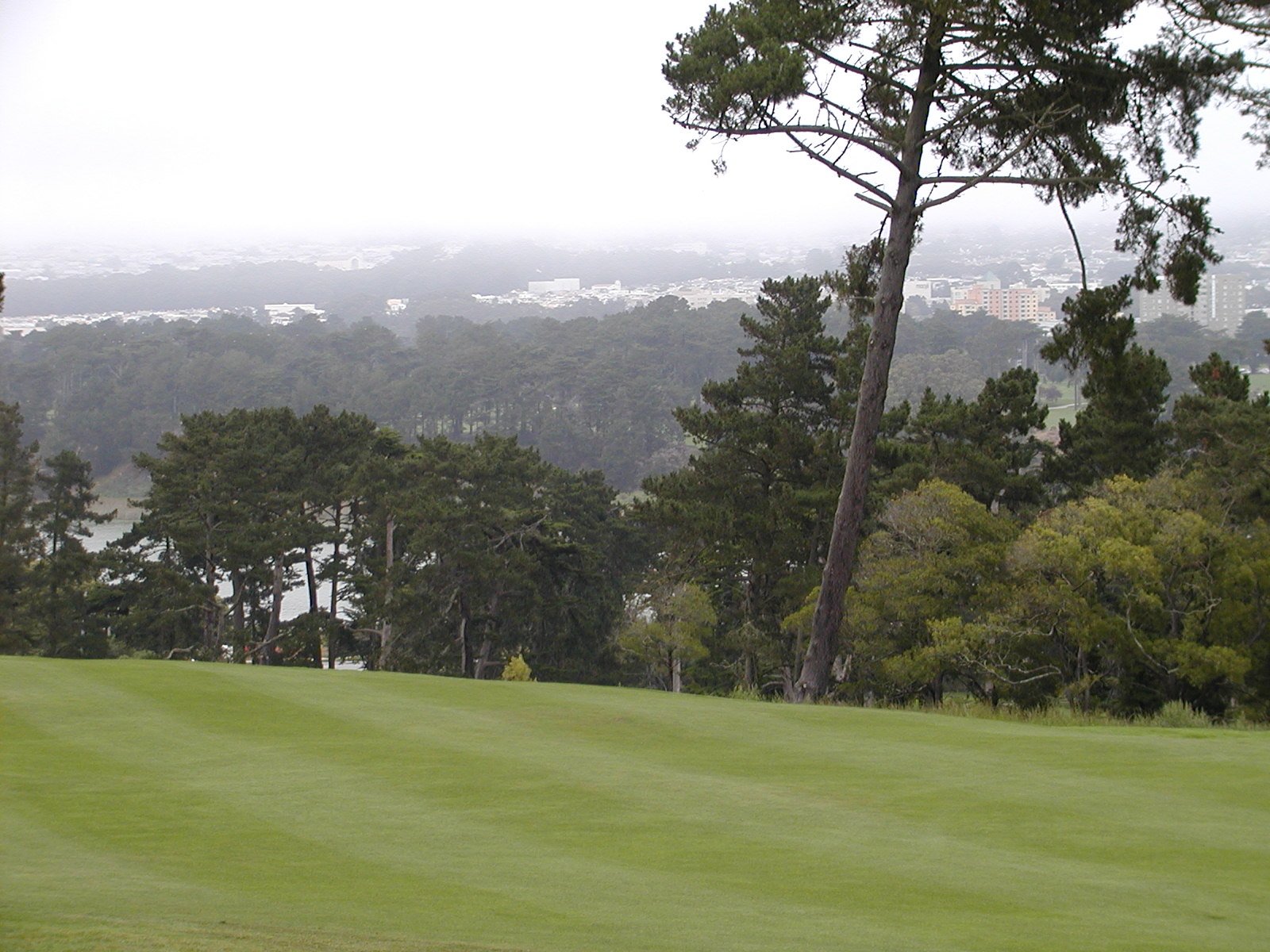OLYMPIC CLUB(LAKE COURSE)
Course Architects: Willie Watson and Sam Whiting (1924), Sam Whiting (1927),
Robert Trent Jones (1953), William R. Love and Frontier Golf
(renovation, 2009), Gil Hanse and Jim Wagner (2020-22)
Year Opened: 1927
Location: San Francisco, California
Slope: 144. Rating: 75.5
Par: 71
Yardage: 7,268
Hole-by-Hole: 1 - Par 5 534 Yds 10 - Par 4 434 Yds
2 - Par 4 445 Yds 11 - Par 4 444 Yds
3 - Par 3 258 Yds 12 - Par 4 462 Yds
4 - Par 4 428 Yds 13 - Par 3 199 Yds
5 - Par 4 505 Yds 14 - Par 4 429 Yds
6 - Par 4 500 Yds 15 - Par 3 157 Yds
7 - Par 4 314 Yds 16 - Par 5 622 Yds
8 - Par 3 209 Yds 17 - Par 5 523 Yds
9 - Par 4 456 Yds 18 - Par 4 349 Yds
Par 35 3,649 Yds Par 36 3,619 Yds
Key Events Held: U.S. Open (1955, 1966, 1987, 1998, 2012), U.S. Women’s Open (2021),
U.S. Amateur (1958, 1981, 2007, 2025),
U.S. Junior Amateur (2004),
U.S. Amateur Four-Ball Championship (2015),
The Tour Championship (1993-94), PGA Championship (2028),
Americas Cup (1958), Ryder Cup (2032),
Pacific Coast Amateur (1971, 1975, 1980, 1984, 1989, 2000, 2006, 2018),
Women's Western Amateur (1948),
San Francisco Open (1946), California Amateur (2017),
San Francisco National Match Play (1930, 1932, 1939).
Awards Won: #35 by Golf Digest - America's 100 Greatest Courses (2024-25)
Ranked 6th by Golf Digest's Best in State (California, 2023-25),
Ranked 25th by Golf Magazine's Top 100 Courses in the U.S.,
Ranked 79th by Golf Magazine's Top 100 Courses in the World.
Website: olyclub.com.
HISTORY: The Olympic Club was founded in 1860 and is the oldest athletic club in the United States. The golf course itself was designed by Willie Watson and built by Sam Whiting back in 1924 and was completely redesigned and rebuilt by Whiting in 1927. Whiting stayed on as golf course superintendent until 1954.
For the first U.S. Open held at Olympic in 1955, Robert Trent Jones was brought in for remodeling and cosmetic changes.
Over the years, The Olympic Club has hosted some amazing events with astonishing results. The first case in point, 1955:
Perennial favorite Ben Hogan, seeking his fifth U.S. Open title, was leading in the clubhouse by two shots with little-known Jack Fleck on the course with four holes remaining. Fleck, a municipal-course pro from Davenport, Iowa, playing his first full year on the tournament tour, made two
birdies over those last four holes, including an eight-footer on the last to tie Hogan and then beat him in a playoff. Hogan was only one stroke behind in the playoff as they went to the 18th tee, but once there his foot slipped and he drove his ball into very deep rough far to the left. It took him three strokes to move it back to the fairway. The end result, Fleck 69, Hogan 72. Fleck's first four rounds were 76-69-75-67-287; there were only seven rounds below the par of 70 in the Championship, and he made three of them, including the playoff. For the week, Olympic Club played to a whopping 8.72 strokes over par.
In 1966, the "King," Arnold Palmer was cruising to victory in record fashion, as he led Billy Casper by seven shots with just nine holes to play. Palmer had opened with a front nine in 32 and needed just par on his final six holes to break the 72-hole scoring mark of 276. Palmer lost a stroke at the 10th, another at the 13th, two at the 15th and then two more at the par-5 16th. Casper tied Palmer with a par-4 against Palmer's five at the 17th. He had then recovered seven strokes in eight holes and five strokes in three holes. Casper had closed with 32 to Palmer's 39 to force a playoff.
Once again, Palmer led after nine holes, this time by three. However, Casper played steady golf over the back nine to score 69 to Palmer's 73 to became the 11th player to win the Open a second time, having captured the title back in 1959. Although the players fared better at this U.S. Open, Olympic still was an impressive test, as the field averaged 75.76 per round, with 15 players breaking par.
The U.S. Amateur Championship made its second visit to The Olympic Club in 1981, when Nathaniel Crosby, son of the late crooner and movie star Bing Crosby, defeated Brian Lindley in the title match.
In a field that included future professional stars Paul Azinger, Corey Pavin, Hal Sutton, Brad Faxon, Ronan Rafferty, Tom Pernice Jr. and amateur standout Jay Sigel, it was the Californian Crosby who came away with the championship.
Crosby, who trailed in four of his six matches during the championship, birdied the 37th hole from 20 feet for the title. Crosby became only the fifth golfer to win the Amateur Championship before his 20th birthday.
In 1987, it was Scott Simpson who turned the tables on favorite Tom Watson. Trailing by two heading into the final five holes, Simpson birdied 14 through 16 to take the lead and then made a miraculous par from a greenside bunker at 17 and a two-putt par at 18 to preserve the lead. Watson, who saved par on 17 from six feet to stay within one, missed birdie on the last from 45 feet to finish second. The two players were the only players in the field to better par for the Championship. The course played relatively easy this time around as 47 rounds bettered par with a scoring average for the championship of 73.53.
Trailing by five shots in the 1998 Open heading into the final round, Lee Janzen captured his second U.S. Open title in six years, when he defeated the late Payne Stewart after playing the final 15 holes in 4-under par. Playing two groups ahead of Stewart, Janzen started at 2-over, but dropped two more strokes behind when he bogeyed the difficult second and third holes. The key to
victory could have been his good fortune on the par-4 fifth. His tee shot found the trees on the right and looked to be lost, but as he was heading back to the teeing ground to replay a second tee ball, his first ball dislodged and fell from a tree into the deep rough. Janzen chipped back to the fairway, hit his approach over the green, and then chipped in for par. With birdies on 12 and 13, Janzen gained a share of the lead. Stewart fell out of the lead with a bogey on 16. His last chance to tie Janzen came at the finishing hole, where he had a 25-footer for birdie. His downhill putt broke left and slid inches below the hole, giving Janzen the biggest come-from-behind win after 54 holes since Hale Irwin came from five back in 1973.
The course once again stood tall for the week, as players averaged 74.49 with only 26 rounds under par. In fact, not one player for the championship finished under par, as Janzen's winning total was even par.
The 1993 and '94 Tour Championship's also were upset -ridden, as Jim Gallagher, Jr. clipped a quartet of players, including Greg Norman and Simpson, by one shot and Mark McCumber defeated Fuzzy Zoeller in a playoff the following year. Gallagher Jr., a five-time PGA Tour winner, has not won again since 1995, while McCumber's title was the last of his 10 Tour wins. A couple of prominent members of Olympic Club have captured a couple of U.S. Open titles. Ken Venturi, runner-up at the 1948 U.S. Junior Amateur, won the 1964 U.S. Open and Johnny Miller, the 1964 U.S. Junior Amateur champion captured the 1973 U.S. Open.
During the 2004 U.S. Junior Amateur, only one player, Brian Harman, was able to finish the stroke-play portion of the event under par, after shooting rounds of 67-66. Harman, however was defeated in the quarterfinals by eventual winner Sihwan Kim, who became the second youngest to win this championship.
Over time, many thought that The Olympic Club was too short to hold a U.S. Open Championship again, but the powers that be at the USGA and, of course, the membership at the club had a different idea.
Playing to just under 7,000 yards, the Lake Course hosted the 2007 U.S. Amateur Championship. Colt Knost defeated Michael Thompson, 2 & 1, to become the sixth golfer in history to win two USGA championships in the same season, and the second to win the Amateur and the Amateur Public Links in the same year. Ryan Moore was the first to do so, in 2004.
Thompson defeated current PGA Tour star Webb Simpson in the first round and he reached the final without playing the final hole in all but one match. Knost also was very proficient in his matches, never reaching the final hole, as he cruised to the championship match. His semifinal win was a 4 & 3 thrashing of PGA Tour winner Jhonattan Vegas.
The final was a seesaw affair, as Thompson won the first hole of the 36-hole match, but Knost captured the second to square the match. The battle continued in this regard until Knost won the final two holes of the morning 18 to take a 1-up lead. Thompson battled back in the afternoon, taking a 1-up lead after the 23rd hole, but Knost once again squared the match on the next. With the match deadlocked after 30 holes, Knost made back-to-back birdies to take control, including a 20-foot birdie on the 31st hole.
How difficult did the Lake Course play during the 2007 championship? The lowest score out of 315 players during the stroke-play portion was 68 by Trevor Murphy. Some of the players enjoyed the challenge, others, well ...
"The brutality of this golf course is unrelenting," said England's Gary Wolstenholme, who lost in the first round of match play. "If you miss it just a hair here or there, you can find yourself dropping shots easily at every turn. You have to be precise. You have to hit the fairways and hit the right clubs
into the greens. The difference between good shots and bad ones is pretty slim. But it makes you think, and that makes it a great test."
Simpson, a two-time PGA Tour winner had this to say about the course, "About 90 percent of the time, you're just punching it out. Even if the lie is halfway decent, you just have to play and not try to force things. It just leads to more trouble."
Wolstenholme, now a Senior European Tour player, who competed six times in the Walker Cup for Great Britain and Ireland, was quite appreciative of Olympic.
"You just have to love this golf course," he said.
"The colors, the variety of greens in the grass and trees, the setting itself - it's a very special place."
A complete renovation of the Lake Course was completed in 2009, transforming the course from just over 6,800 yards to almost 7,200 yards. New tee complexes were designed on 14 holes, bunkers were tweaked, added and removed, with only 62 on the course and the eighth hole was redesigned, extending the hole over 60 yards. The course is now expected to play 373 yards longer than it did in 1998.
In addition to the changes on No. 8, the USGA for the 2012 Open have adjusted par on two of the holes, making the first a robust 502-yard par-4 and the 17th, a reachable 522-yard par-5. In previous championships at The Olympic Club, No. 1 played as a par-5 and the 17th a par-4.
Green speeds will be the same as in 1998, 11.5-12.5 feet on the Stimpmeter. Not very comforting, since the size of the putting surfaces is just 4,400 square feet.
When the U.S. Women’s Open came to Olympic in 2021, only five players broke par, as Yuka Saso defeated Nasa Hataoka on the third hole of a playoff. Lexi Thompson was leading, but a final round of 75 put her in third place, one shot out of the playoff. Her back-nine collapse started with a double-bogey on 11 and three bogeys on 14, 17 and 18. Thompson was five strokes ahead with 10 holes remaining, before struggling down the stretch.
Following the Women’s Open, Gil Hanse and his team came in to renovate the greens and fairways. In addition, new fairway bunkers were added and the seventh hole was re-routed to sit closer to the 8th tee. All green complexes were made 35-percent larger and the fairways were expanded by 25-percent.
HOLE BY HOLE REVIEW: One of the most important shots of your day around Olympic will be your opening shot. The par-5 first, which was played as a par-4 for the 2012 U.S. Open, is a dogleg right which requires a slight fade off the tee to set up a possible chance to reach the green in two. Miss right and trees and deep rough will grab your ball, left, more of the same. Your second shot is played downhill to a small green. When laying up, make sure you have a correct yardage, as a pair of fairway bunkers will collect any errant shot. The green slopes from back to front with a ridge in the center. A definite birdie chance, as long as you find the fairway.
The second hole, once rather short, has been lengthened over 30 yards and plays uphill all the way to the green. A right-center tee shot is required, as the fairway slopes to the left and has been moved six paces to the left, tightening the landing area. The putting surface is well protected by a handful of bunkers. A high, soft approach is required to hold the green, but the most important advice is, don't miss long or short. The green slopes severely from back to front and right to left and with a false front, club selection will be key.
Wind will certainly play havoc on the third. The longest par-3 on the course at 247 yards, some 24 yards longer than in previous years, this hole will play slightly shorter due to the downhill slope to the green. The putting surface is quite large and slopes from front to back and once again is well protected by sand. Making par or even bogey here is all right.
One of the most difficult holes on the opening nine is the fourth. The second of nine par-4s over 400 yards in length, the fourth requires a draw off the tee, with a 3-metal or long iron to a fairway that bends from left to right. Now you're left with an uphill second to a green that slopes from back to front. Make sure you take enough club, or your approach will slip back off the green. Remember, below the hole!
Just the opposite of the previous hole, the fifth is a downhill, dogleg right and requires a big fade from the back tee. This hole has been lengthened over 40 yards with two new tees and reaches 498 yards in distance. A medium-to-long iron is required for your second shot, that is if you hit the
slim fairway, to a green that slopes from right to left. As is the case with all of the greens at Olympic, speed is key, as the putting surfaces play to 11 or more on the Stimpmeter.
The sixth is the only hole on the course which features a fairway bunker, located down the left side. Since the 2007 U.S. Amateur Championship, two new tees have been added, increasing the length of the hole to 489 yards. Bending slightly to the left, make sure you avoid the trap which has been brought in closer to the fairway. With a successful big drive, another long iron will remain. Your approach is slightly downhill and downwind. The putting surface is quite small, as are all the greens here, and is surrounded by three deep bunkers. Try to keep your second shot short and left of the hole, otherwise three-putting could be the end result.
It's either bombs away or a simple iron off the tee on the short seventh. Just 288 yards from the tips, the seventh plays uphill to the green, which is surrounded by numerous bunkers. The smart play is a long iron or fairway metal, leaving just a short pitch to a devilish green, which now features just two tiers. The green slopes from back to front, but if you land on the correct level, there's a definite birdie opportunity. Miss the putting surface and you'll be stuck in probably the thickest rough on the course.
Uphill all the way, the eighth used to be the easiest hole on the course at just 137 yards. Not anymore. Over 65 yards have increased this beauty to 200 yards, requiring a long iron or fairway metal off the tee. With a beautiful view of the clubhouse, the par-3 is completely surrounded by bunkers of all different shapes and sizes. The lima bean shaped green features a gradual slope in the center. A back left pin placement could result in plenty of bogeys, as it will bring the back bunker into play. With the tall Cypress trees down the left side, you'll actually need to draw your tee ball. Yikes.
The ninth is a downhill, dogleg right par-4 which requires a fade off the tee, as the fairway slopes from right to left. Although sand protects the green, the putting surface is open in the front and receptive to a medium-to-short iron. Stay below the hole to have any chance at birdie, as the green
slopes hard from back to front. Not without adjustments, No. 9 has been lengthened 16 yards and the fairway narrowed to just 27 paces.
The inward nine opens with another dogleg right, with tall trees guarding both sides of the fairway, which has been moved to the right, tightening the landing area. A fade off the tee is required to set up a short iron to a green that slopes away from the player. Land your approach on the front of the surface, as the green is firm, and slopes toward the rear. With a solid tee shot, the 10th can be a realistic birdie opportunity.
Although straightaway and just 430 yards, the 11th plays into the wind, so a big tee shot is needed. A medium-to-long iron is required to reach the green and if the pin is in back quadrant of the two-tiered green, then add at least one extra club. Sand protects both sides of the surface, but the front is available to run up your second shot. Making par here is certainly a bonus.
A hole that was once just 396 yards long, the 12th is now over 450 yards in length and could be the most difficult on the course, thanks to the ever-present pines and cypress trees that line the fairway just 100 yards off the tee, making for a very narrow opening for your tee shot. With a successful
tee ball, a medium iron will be sufficient to give yourself a birdie chance. However, don't miss left or right, as deep sand bunkers will gobble up your shot and long is no bargain, either, as a closely mown area awaits. The green slopes gently from back to front and is minuscule at best, so hitting your target could result into a positive ending.
Although playing downwind, the par-3 13th is slightly uphill to a green well protected by two deep bunkers and closely mown chipping areas. The putting surface is quite narrow and long at 32 yards in depth, so hitting the green from 199 yards out, could be quite a chore. The green slopes from right to left and back to front, so making par is an excellent score. Like most greens at Olympic, the slope and grain run toward Lake Merced. With the overhanging Cypress on the right, try and cut one in for your best shot at par.
The dogleg-left 14th requires a big sweeping draw off the tee to set up a medium iron to the green. With the fairway being shifted left, the right rough is a spot that will see plenty of action. Favor the right side of the putting surface and you'll leave yourself a good birdie chance. The green is tiny, protected on either side by sand and circular at 26 yards in depth, but if you're below the hole, you can make birdie.
Another tiny green awaits at the final par-3 on the course, the uphill 15th. At just 157 yards and a quartering wind, club selection will be key, not to mention accuracy. The recently rebuilt elevated green is almost completely surrounded by four deep bunkers and slopes from back to front.
Although short, par will be a difficult score for those players missing the green.
The longest hole on the course just got longer, as a new tee has been added to the monster 16th, increasing its length to 670 yards, the longest hole in U.S. Open history. This sweeping dogleg left requires extreme accuracy off the tee and with your second, as you must play down the right side of the fairway, as to avoid being blocked by large trees on the entire left side. A short iron for your approach will remain to another tiny green that's fronted by two bunkers, can leave a solid birdie chance, but don't be disappointed with par. It's a hole that no one has ever hit in two in
competitive play, no that's a par-5. During the 2007 U.S. Amateur, the 16th played to a scoring average of 5.317, one of 16 holes during the championship that played over par for the week.
The 17th, as a par-5, could be construed as easy, but when playing in tournament conditions, the hole has played as a brutal par-4. Just ask the players in 2007, as this was the hardest hole for the week with only nine birdies made. During the 1998 U.S. Open, the 17th was also the most difficult
for the championship. Usually into the wind, the 17th requires a big drive down the left side, as the fairway slopes back to the right. A fairway metal or long iron will be needed to get home in two. The difficulty of the hole has just begun as you reach the green, as the putting surface is guarded
by sand and slopes hard from back to front. This green is usually one of the fastest on the course. Take par and move on.
Although not the longest of finishing holes, the 18th could be one of the greatest short holes in golf. At just 344 yards, the final hole requires just a long iron or fairway metal to a downhill fairway, that's just 21 paces wide and slopes slightly from left to right. After negotiating the tee shot, a short iron to the uphill green must be kept below the hole. The narrow and tiny putting surface is the smallest on the Lake Course. Following the 1998 U.S. Open, the 18th green was rebuilt as to make it less severe. Four diabolical bunkers, three of which spell out I-O-U, protect this minuscule target. It's no wonder that the USGA and PGA Tour have made numerous stops here.
FINAL WORD: When reviewing golf courses, one looks at conditioning, difficulty, beauty, history and other intangibles.
Well, The Olympic Club is all of the above and more.
Carved into the side of the Pacific Coast, The Olympic Club offers exquisitely maintained grounds. As difficult a course as any in the United States, just ask the players after each of the four U.S. Opens held here, as only four players have finished under par at completion of the event.
Not only is the course beautifully landscaped, but the scenery of the San Francisco area, the amazing Cypress and Pine trees that line each and every fairway and just the general ambience make this a special place.
The history of the course is second to none, U.S. Opens, U.S. Amateurs and Tour Championships, need I say more.
I will.
The Olympic Club's small, undulating and slick greens and tight fairways make this course one of the finest tests of golf anywhere in the country. The world's best players will be delighted that for the U.S. Open the green speeds won't be at membership speed of 13-14 on the Stimpmeter.
What makes this club such an amazing place is that over almost 90 years of its existence, very little has changed. The quality of the design has withstood the changes in equipment and agronomy. "It's amazing how little the Lake Course has actually changed over the years," said Mike Davis, former USGA executive director. "Other than the eighth hole, it's basically the same course."
Let's not forget some of the intangibles.
The Olympic Club also features a second 18-hole course (Ocean Course), a nine-hole par-3 venue (Cliffs Course) an outstanding practice facility and, by the way, a majestic clubhouse overlooking the 18th green, that rivals Congressional and Merion's stately structures.
Olympic puts a premium on accuracy off the tee and pinpoint control with your irons as you attempt to catch a piece of the putting surface. "This is really a great shot maker's course," Davis said. "It is a wonderful test in terms of just the ability to maneuver your ball, sometimes we get wind
here at Olympic Club and any time you introduce wind into it, now all of a sudden it not only affects the yardage but the player has to really start thinking more about the trajectory of their golf ball."
In addition, the fairways at Olympic are tight and undulating. "Some other things that make Olympic Club a unique and very good test of golf is the fact that you have got so many un-level lies out there," Davis added. "I think it's eight of the 14 holes with approach shots you're playing from an uphill, downhill, side hill lie and even for the world's best that tests you more."
There's a lot of elevation changes out at Olympic Club and that too tests the best players. Because it's much easier to hit a level shot than trying to hit uphill, downhill and trying to figure out what your golf ball's going to do.
Forget Ghirardelli Square, the cable cars and even Alcatraz for that matter, whatever you do, make sure you play Olympic when in California, the real San Francisco treat.

